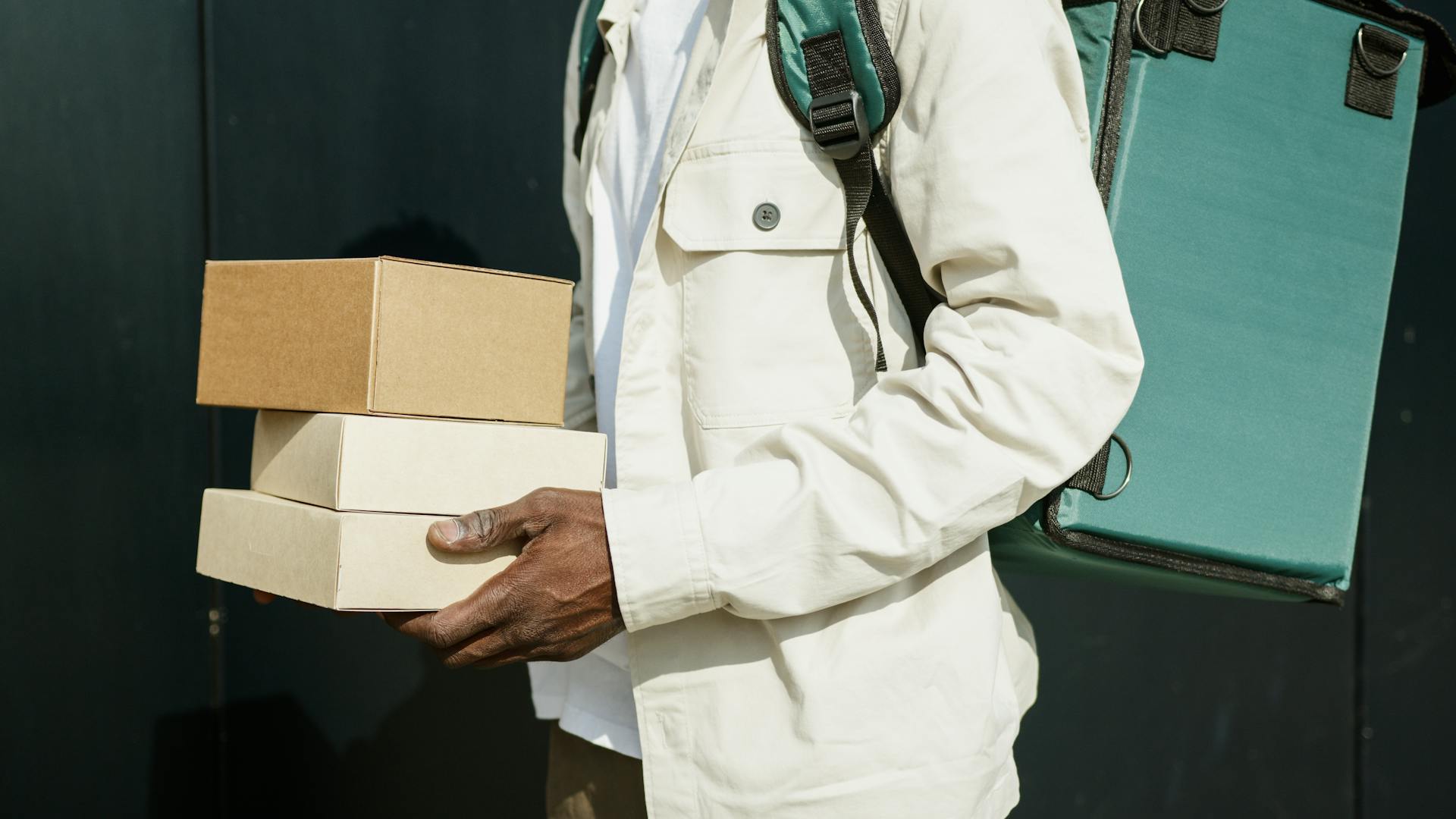In a world where instant gratification has become the norm, waiting for a package to arrive in several days feels like a distant memory. Consumers today demand more than just products—they expect them delivered quickly, reliably, and often within the same day. As e-commerce continues to surge, the need for fast, efficient delivery has never been more critical.
The rise of same-day delivery has revolutionized the way we shop, shifting the expectations of consumers and businesses alike. With the growth of e-commerce, the demand for quick, hassle-free delivery services has escalated, pushing logistics companies to innovate and adapt at an unprecedented pace. In today’s fast-moving market, offering reliable same-day delivery isn’t just a luxury—it’s become a necessity for businesses aiming to stay competitive. As consumers increasingly prioritize speed and convenience, understanding the latest developments in the same-day delivery industry is essential for anyone looking to thrive in this rapidly evolving landscape.
Technological Advancements Driving Same-Day Delivery
The same-day delivery landscape has been dramatically reshaped by cutting-edge technologies. One of the key drivers is the use of Artificial Intelligence (AI) and automation. AI-powered systems are now capable of optimizing delivery routes in real time, analyzing traffic patterns, weather conditions, and even consumer preferences to ensure packages arrive on time. This has led to more efficient and cost-effective delivery processes, reducing both delivery time and operational costs. Additionally, robotics is playing an increasingly important role in warehouses and sorting facilities. Automated guided vehicles (AGVs) are now used for picking, packing, and sorting packages, significantly speeding up the fulfillment process and reducing human error.
Meanwhile, the buzz around drones and autonomous vehicles is growing as more companies experiment with these technologies in pilot programs. Drones, for example, have proven particularly effective in dense urban areas where traffic congestion can delay traditional delivery methods. The ability to bypass roadways entirely makes drones a promising solution for fast, direct deliveries. Several logistics companies have successfully launched drone delivery programs, allowing them to reduce delivery times from hours to mere minutes. These experiments have shown that drones can be a game-changer in the last-mile delivery phase, where delays often occur. However, regulatory hurdles remain, and widespread adoption of these technologies will require careful planning and safety measures.
Another major innovation is real-time tracking and predictive analytics. Real-time tracking has transformed the customer experience by allowing consumers to monitor their packages as they move through the delivery process. With the addition of predictive analytics, customers are now given precise delivery windows, often down to the minute. This not only improves the customer experience but also optimizes delivery operations by predicting potential delays before they happen. Predictive models help companies improve delivery times by factoring in everything from supply chain bottlenecks to weather forecasts.
Impact of E-Commerce Growth on Same-Day Delivery
As e-commerce continues its rapid expansion, same-day delivery has become an essential service that many online shoppers expect. The rise of platforms like Amazon, which has set the bar high for fast shipping, has significantly raised consumer expectations. Today’s shoppers are no longer willing to wait days for their packages; they want them delivered within hours. This shift has placed immense pressure on logistics companies to innovate and meet the demand for speed.
Retailers and logistics providers are responding by developing more efficient supply chains. Hyperlocal delivery models have emerged as a result, where goods are stored closer to consumers, reducing travel time and allowing for quicker deliveries. Retailers are also forming strategic partnerships with local couriers and delivery services to cater to the growing need for rapid service. This trend is particularly evident in urban areas, where proximity to fulfillment centers can drastically cut delivery time.
The growing e-commerce market has not only increased demand for same-day delivery but also created new business opportunities. Logistics providers are shifting their operations to ensure that they can handle the influx of orders while maintaining cost efficiency. This has spurred innovation in delivery technology and business models, as companies seek to improve the customer experience and gain a competitive edge.
Environmental and Sustainability Considerations
With the increasing demand for fast delivery, the environmental impact of same-day services has come under scrutiny. Logistics companies are under pressure to balance speed with sustainability. One solution to this challenge is the adoption of green logistics initiatives aimed at reducing the carbon footprint of deliveries. Electric vehicles (EVs) are becoming more common in delivery fleets, offering a cleaner alternative to traditional diesel-powered trucks. These vehicles not only reduce emissions but also lower operating costs, making them an attractive option for companies looking to build more sustainable operations.
Eco-friendly packaging is another area of focus. Many companies are shifting toward recyclable and biodegradable packaging materials to reduce waste. Additionally, some are exploring packaging-free or minimal packaging solutions to further lessen environmental impact. However, the challenge remains: how to balance the demand for speed with the need for sustainability. While advancements in green logistics have been encouraging, achieving a truly sustainable same-day delivery model remains a work in progress.
Expansion of Same-Day Delivery Services
As the demand for fast delivery grows, so too does the competitive landscape. New players are entering the market, offering innovative solutions to meet consumer expectations. These entrants often bring fresh approaches, leveraging new technology or adapting delivery models to different regions and markets. Partnerships between e-commerce platforms and local delivery services are becoming more common, as businesses recognize the value of leveraging local expertise to offer quicker, more reliable service.
On a global scale, the expansion of same-day delivery services is also taking off. Companies are increasingly looking to replicate successful models in different regions, driving international growth. As logistics providers scale their operations, the competitive landscape will continue to evolve, with businesses vying to offer the fastest, most reliable delivery solutions.
Challenges Facing the Same-Day Delivery Industry
Despite the technological advancements and growing demand for same-day delivery, several challenges remain. Logistics and cost remain significant hurdles, as companies struggle to balance fast delivery with operational efficiency. The need for warehouses, fulfillment centers, and delivery infrastructure close to consumers can drive up costs, particularly in urban areas where space is at a premium.
Another challenge is the regulatory landscape surrounding new technologies. Drones and autonomous vehicles face strict regulations, particularly concerning air traffic, safety, and privacy concerns. While pilot programs are testing the waters, widespread adoption will require regulatory approvals, which can take time. In addition, balancing speed with service quality in urban and rural areas presents its own set of challenges, particularly as delivery routes grow more complex.
Future Outlook
Looking ahead, the same-day delivery market is expected to see continued growth, driven by both technological innovations and increasing consumer expectations. Autonomous delivery systems, like drones and self-driving vehicles, are likely to become more prevalent, offering significant improvements in delivery speed and efficiency. The adoption of AI-driven logistics will continue to enhance route optimization, predictive analytics, and customer service.
Potential disruptions on the horizon include the rise of alternative delivery models, such as crowd-sourced delivery networks and blockchain-based logistics systems. Businesses that can adapt to these changes and stay ahead of the curve will likely emerge as leaders in the same-day delivery market.
Conclusion
The same-day delivery industry is rapidly evolving, driven by technological innovations, the growth of e-commerce, and an increasing focus on sustainability. As businesses compete to meet the demand for speed and efficiency, we can expect more advancements in delivery technology, alongside greater emphasis on green logistics. While challenges remain, the future of same-day delivery promises exciting possibilities for both businesses and consumers.
IX. Frequently Asked Questions (FAQs)
- What is same-day delivery?
Same-day delivery refers to a shipping service that delivers an order to the customer within the same day it was placed, often within a few hours of purchase. This service is particularly popular in urban areas, where delivery times can be significantly reduced. - How does AI improve same-day delivery services?
AI plays a crucial role in optimizing delivery routes by analyzing real-time data such as traffic, weather conditions, and historical trends. This helps reduce delays and ensures packages are delivered as quickly as possible. AI also helps in warehouse automation and inventory management, speeding up the entire fulfillment process. - Are drones the future of same-day delivery?
Drones are becoming an increasingly viable option for last-mile delivery in dense urban environments. By bypassing traditional roadways, drones can offer faster delivery times, reduce traffic congestion, and lower carbon emissions. However, widespread adoption is still limited by regulatory challenges and infrastructure needs. - How do logistics companies handle the environmental impact of same-day delivery?
Many companies are incorporating electric vehicles (EVs) into their delivery fleets, significantly reducing emissions. Additionally, companies are exploring sustainable packaging options, such as recyclable materials and minimal packaging to decrease their environmental footprint. Balancing speed and sustainability remains a challenge, but these efforts are crucial for greener logistics. - What are hyperlocal delivery models?
Hyperlocal delivery models focus on storing products closer to the customer, typically in local warehouses or distribution hubs, to shorten delivery times. This model is particularly effective for e-commerce companies and retailers aiming to provide faster, more efficient service, especially in densely populated areas. - What are the main challenges facing same-day delivery services?
Some of the key challenges include high operational costs, especially in urban areas with limited space for fulfillment centers, and regulatory hurdles for technologies like drones and autonomous vehicles. Additionally, maintaining service quality while handling an increase in demand and ensuring timely deliveries in rural areas can be difficult. - How is the growth of e-commerce affecting same-day delivery?
The rise of e-commerce has led to a surge in demand for faster delivery services, with same-day delivery becoming an expectation for many consumers. Retailers and logistics providers have adapted by improving their delivery networks, leveraging technology, and forming partnerships to meet this demand and stay competitive. - What can businesses do to stay competitive in the same-day delivery market?
To stay competitive, businesses should focus on adopting the latest delivery technologies, including AI-driven logistics and automation. They should also consider partnering with local delivery services to enhance operational efficiency and offer quicker, more reliable services. Additionally, maintaining a balance between speed and sustainability is crucial for long-term success. - Is same-day delivery available globally?
While same-day delivery is widely available in major urban centers around the world, its availability can vary depending on the region and the infrastructure in place. In developing countries or rural areas, it may be more difficult to implement same-day services due to logistical challenges and limited delivery infrastructure. - What can we expect in the future of same-day delivery?
The future of same-day delivery is likely to see increased use of autonomous vehicles, drones, and AI-driven logistics systems. As technology continues to advance, we can expect faster, more efficient services, along with greater emphasis on sustainability and eco-friendly solutions in the logistics industry.

